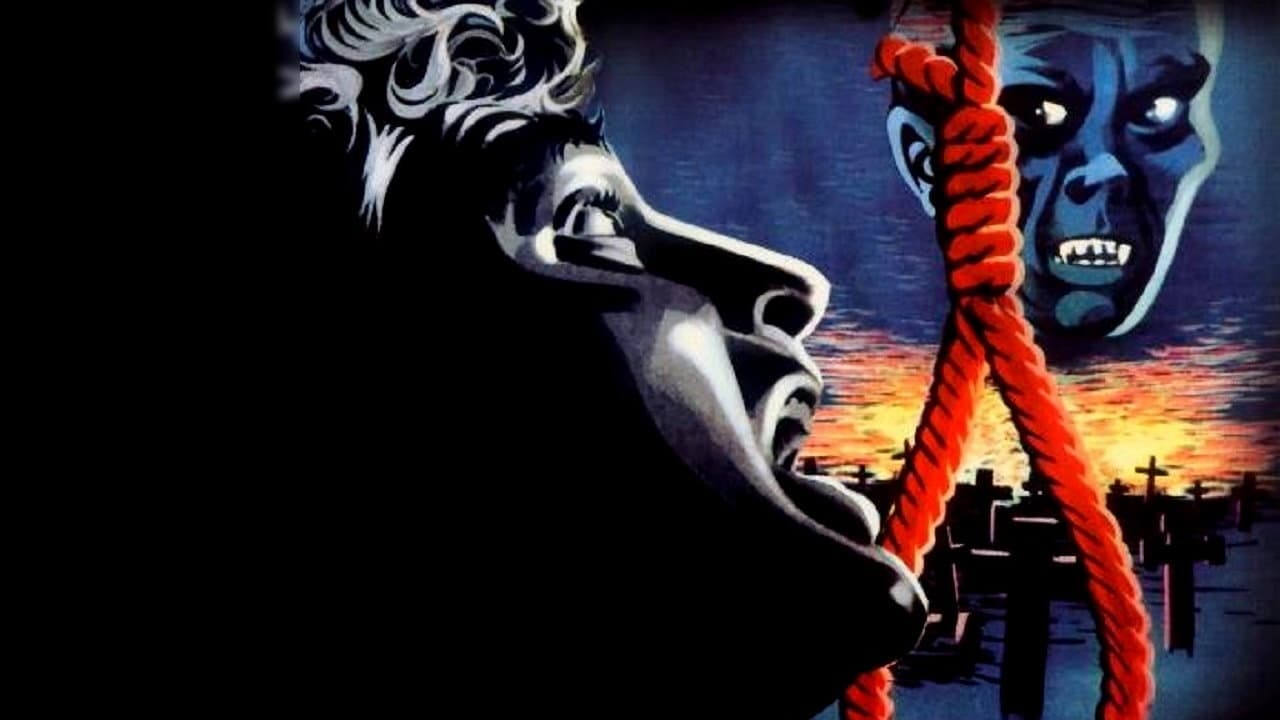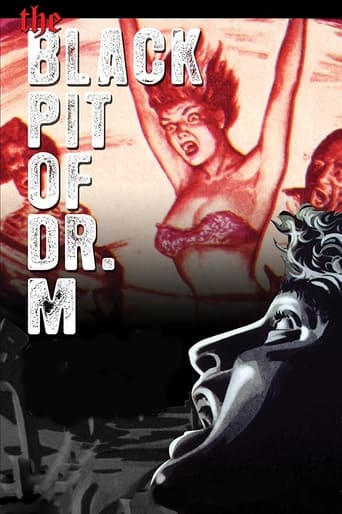

Instead, you get a movie that's enjoyable enough, but leaves you feeling like it could have been much, much more.
... View MoreI gave this film a 9 out of 10, because it was exactly what I expected it to be.
... View MoreOk... Let's be honest. It cannot be the best movie but is quite enjoyable. The movie has the potential to develop a great plot for future movies
... View MoreThere's no way I can possibly love it entirely but I just think its ridiculously bad, but enjoyable at the same time.
... View MoreAfter Dr Mazali (Rafael Betrand) makes his dying colleague Dr Aldama (Antonio Raxel) promise to reveal the secrets of the afterlife to him, in a séance he is then given a stark warning: in a few months time, he will indeed learn what lies beyond death, but at great personal cost. For even as "science senselessly struggles to break the barrier which separates us from God," one door will close just as another opens, in an irrevocable and fearful process. Meanwhile a mysterious stranger contacts Aldama's estranged daughter Patricia (Mapita Cortes) and brings her to Mazali's sanatorium where events will reach their climax in madness and tragedy...After two successful vampire pictures, El Vampiro and El Ataud del Vampiro, made in just the previous year to this film, director Fernando Méndez next opted for this more ambitious project, a complicated and atmospheric zombie tale in which some have seen anticipations of much Mexican genre production due the following decade. The Black Pit Of Dr M (aka: Misterios de Ultratumba) can therefore be seen as the culmination of his short career in horror, as only the unsatisfactory western hybrid The Living Coffin (aka: El Grito de la Muerte, 1959) remained before Méndez worked on a couple of further, more nondescript, projects and retired from directing a couple of years later.While some parts of Black Pit are hugely impressive - leading its effusive DVD commentary track to claim it as a neglected 'masterpiece', some of its strengths are arguably also its weakness. For instance the insistent, melodramatic tone, studio acting, or the conflation of several horror elements (zombies, apparitions, mad scientists, disfigured assistants, private asylums, etc) into one heterogeneous mixture that's both daring and ultimately diffuse in effect.Méndez's black and white film looks splendid in this reincarnated edition, with excellent cinematography that includes deep focus, adding immeasurably to the Gothic atmosphere it inhabits. Dr Manzali's mist swept, wet-paved hacienda for instance, containing the sanatorium, full of evocative visual pleasure and composition, or the Ulmer-like minimalism of the nightclub in which we first see Patricia. Add to this a splendidly sombre main theme by Gustav Carrion and fans are in for a treat. Such sustained sombreness is certainly streets ahead of the better-known, somewhat beloved, campy works of terror that were to follow shortly in the Mexican horror film, like The Brainiac (aka: El Baron del Terror, 1962). In fact the moody genre success of Mendez's film makes it hard to see why the American distributors felt obliged to change the title at all, let alone quite what the black pit in the English language title is. Dr Mazali has nothing like it on show, unless it is the metaphorical pit of madness into which he so dramatically plunges.Combining the disparate elements of the plot into one convincing whole is, as already mentioned, one of the film's biggest challenges. It's not that the result is a failure, far from it. But as a scarred henchman, gauche lovers, Dracula-like caped figure, a madwoman, obsessed medic and all the trapping of a B-movie asylum come together on screen in turn, by the half way mark Méndez has to make a decision about progressing the plot out of these complications, and then to its crisis which is only in varying degrees completely successful. One wishes that he had made more of an earlier stylistic decision, which incidentally makes up one of the film's finest moments: a startling jump cut from a close up of the terrified Patricia's eyes directly to an impending confrontation within the madhouse. Elsewhere the narrative abruptly (presumably for reasons of timing and clarity) skips a whole three months and a murder trial before it takes up matters again in a death cell - a process done through more traditional editing which leaves the development of one major character meantime at least to be desired. But perhaps one should carp too much; nightmares after all have their own disorientating logic (and the DVD blurb does refer optimistically to 'shocking jolts'), this while sacrificing some mundane events gives Méndez time to bring out some striking sequences: the eruption from the grave for instance, or those within the asylum.Elsewhere, and away from the intriguing complexities of the narrative, things are less original. As the central and necessarily doomed character, Dr Mazali suffers from the stereotyping dogging most scientists of his ilk; those to whom "There are more things in heaven and Earth... than are dreamt of in your philosophy," can be applied almost as narrative mantra. Actors Betrand and colleagues do a respectable job, but it's fair to say that most pleasure obtained by the viewer stems from the mounting of the plot, rather than the way it's acted.CasaNegra can be congratulated on doing a fine job in bringing this Mexican horror classic safely to disc, one of a series of such releases. Not everything is perfect (viewers are warned about some 'brassiness' in the soundtrack sound, but it's very minor especially compared to an unmentioned, persistent low hum heard throughout, presumably present in the original elements). The print, taken from vault materials, is admirably free from on screen damage or artifacts. Extras include an enthusiastic and welcome commentary by IVTV's Frank Coleman, a photo essay 'Mexican Monsters Invade the US', a director's biography, the original 1961 continuity script, cast bios, poster and stills gallery with the original trailer.All in all this is indispensable viewing for those who enjoy their horror in black and white, especially those who cherish the original 1930s' Universal cycle, from which much on offer here owes strong inspiration. Those who have stumbled across Mexican cinema of this type will see this is one of the best examples and not hesitate others should check it out as soon as possible.
... View MoreStrrrrrrrrrrrrike TWO for Mexican horror cinema! After seeing the already astonishing "Curse of the Crying Woman", I got really intrigued by this nation's extremely underrated horror heritage and big surprise this "Black Pit of Dr. M" is even better! This is one of the darkest and scariest films ever made and it features some of the absolute greatest Gothic-horror themes imaginable. We've got mad scientists, eerie graveyards and mental institutions, loud thunderstorms, séances and of course a tragic love affair. The film starts with an atmospheric voice-over reassuring us that whatever lies beyond death should always be kept a secret. Two obsessive scientists once tried to discover if there's any way of getting back among the living and "The Black Pit of Dr. M" tells their horrid story. Dr. M(asali) and his colleague Dr. Aldama made a pact stating that the first of them to die has to come back and inform the other about the secrets of resurrection. When Dr. Aldama dies, he keeps his promise but also warns his colleague about the dangers of toying with the afterlife. Naturally, Dr. neglects this good advise and mysterious events start to take place, all indicating his own death on the fifteenth of November. This is a super-creepy film with a constantly ominous atmosphere and some of the most petrifying set pieces I've ever beheld. Every sequence simply oozes suspense, whether set in the asylum (where a crazed gypsy woman runs amok) or in Dr. M's own hacienda, where Dr. Aldama's spirit still dwells around. The outdoor filming locations are always enshrouded with fog and the nights seem to last three times as long as the days. The sinister music and sober B&W photography only increase the creepiness, while the performances of these fairly unknown Mexican actors and actresses are more than reasonable. There are some minor holes in the plot occasionally, but I'm really not in the mood to nag about those, as I personally was too overwhelmed by the intensity of this film. Horror films, especially Gothic ones, really don't get any creepier than this one. Make this a top priority on your must-see list.
... View MoreMovies and TV from the Buffy show all the way back to 1960 have been ripping off the dig-myself-out-of-the-grave scene, evidently begun with this film (correct me if I'm wrong). The idea could be as old as Poe but it's this film which, in my history, succeeds with the definitive version. As mentioned earlier, two doctors in charge of an asylum agree to contact the one living, should the other die first. The theme played on the violin by Dr. M is recapitulated at different plot points in a way that earlier audiences would recall from opera.
... View MoreAges ago a dubbed print of this movie used to run frequently on "Chiller Theatre" on Saturday nights. I saw it so many times I memorised it and it is still among my fondest memories. The music was what I first noticed, it stood out in my mind (many years later someone "borrowed" it for a direct-to-video picture called THE VIDEO DEAD). Rafael Bertrand, who later played "Capt. Labiche" in ISLE OF THE SNAKE PEOPLE; one of Boris Karloff's last movies, is Dr. Masali, master of an insane asylum. He makes a deal with colleague Dr. Harrison Aldeman (Jacinto Aldama in the undubbed print) that whoever dies first will come back and tell the survivor what lies behind deaths door. Dr. Aldeman dies first and returns during a séance to tell Masali a set of events have already begun that will enable him to solve the mystery. He does, but not nearly in the way he had expected to. An insane gypsy woman and an orderly named Elmer figure in the mystery very prominently; so does Dr. Aldeman's daughter who is summoned to the asylum by a mysterious messenger who turns out to be her fathers ghost! Along the way there is unrequited love, mutilation, murder, ghosts and death. I always thought this was a scary movie when I was a child. Somehow I think it still is. Now here is the complicated part. A dubbed print does exist, at least it used to, because New York's Channel 11, WPIX had it. That was more years ago than I care to remember but I would like to think they did not just toss the print out with the trash when they stopped running "Chiller Theatre". Maybe it is still in the vault gathering dust and waiting to be found. For cryin' out loud will somebody go look!
... View More